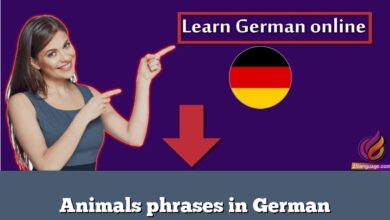past tense in German

Learning the past tense in German involves understanding the various verb conjugations and patterns. Here are the key steps to learn the past tense in German:
- Identify regular and irregular verbs: In German, regular verbs follow predictable patterns when conjugated in the past tense, while irregular verbs have unique conjugation forms.
- Conjugate regular verbs: Regular verbs in German form the past tense by adding the suffix “-te” or “-ete” to the stem of the verb. For example, the verb “spielen” (to play) becomes “spielte” (played) in the past tense.
- Learn the strong (irregular) verbs: German has a set of strong verbs that undergo stem changes in the past tense. These changes can include vowel changes, vowel lengthening, or consonant shifts. Examples of strong verbs include “gehen” (to go), which becomes “ging” (went), and “sehen” (to see), which becomes “sah” (saw).
- Practice irregular verbs: Besides the strong verbs, there are some irregular verbs that do not follow predictable patterns. Examples include “sein” (to be), which becomes “war” (was), and “haben” (to have), which becomes “hatte” (had). These verbs need to be memorized individually.
| Infinitive | English | Past Tense |
|---|---|---|
| sein | to be | war (was) |
| haben | to have | hatte (had) |
| machen | to do/make | machte (did/made) |
| sagen | to say | sagte (said) |
| gehen | to go | ging (went) |
| kommen | to come | kam (came) |
| sehen | to see | sah (saw) |
| wissen | to know | wusste (knew) |
| denken | to think | dachte (thought) |
| nehmen | to take | nahm (took) |
| geben | to give | gab (gave) |
| sprechen | to speak | sprach (spoke) |
| finden | to find | fand (found) |
| fühlen | to feel | fühlte (felt) |
| lesen | to read | las (read) |
| schreiben | to write | schrieb (wrote) |
| verstehen | to understand | verstand (understood) |
| treffen | to meet | traf (met) |
| essen | to eat | aß (ate) |
| trinken | to drink | trank (drank) |





























